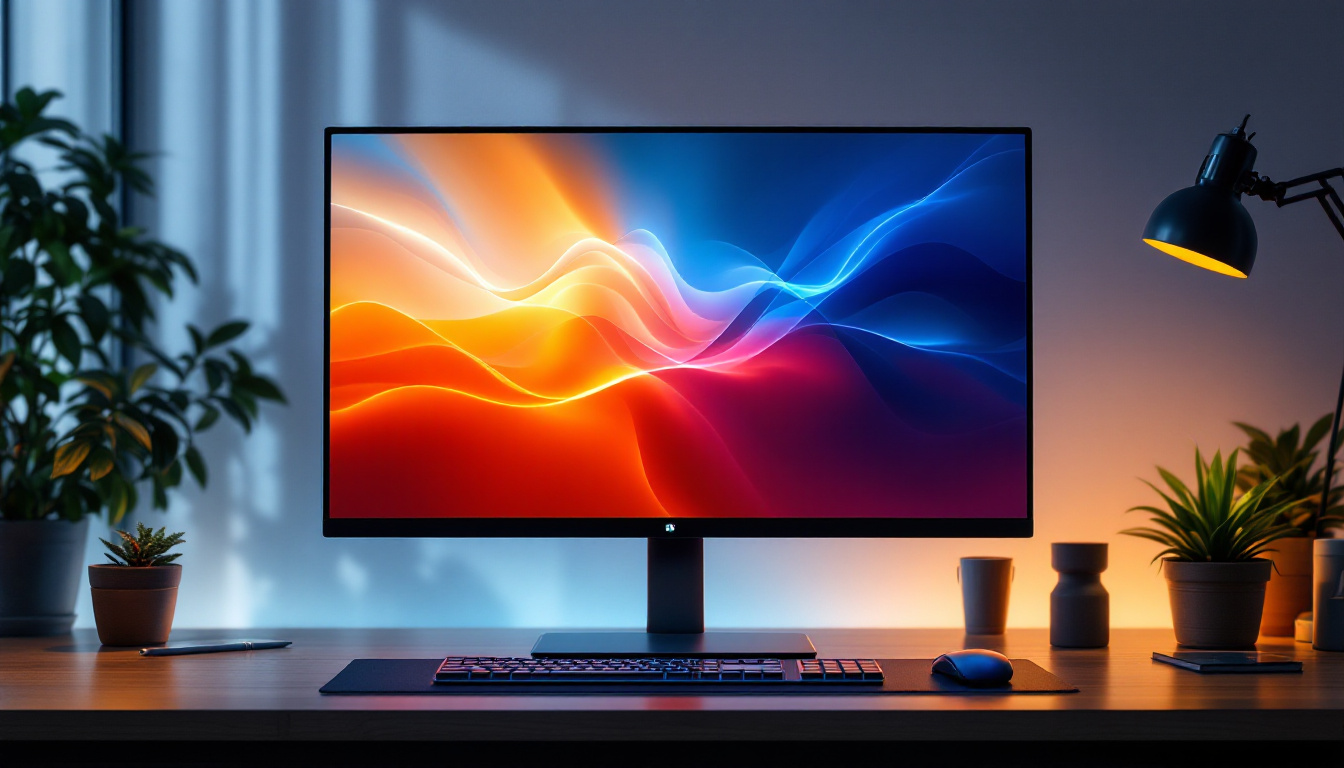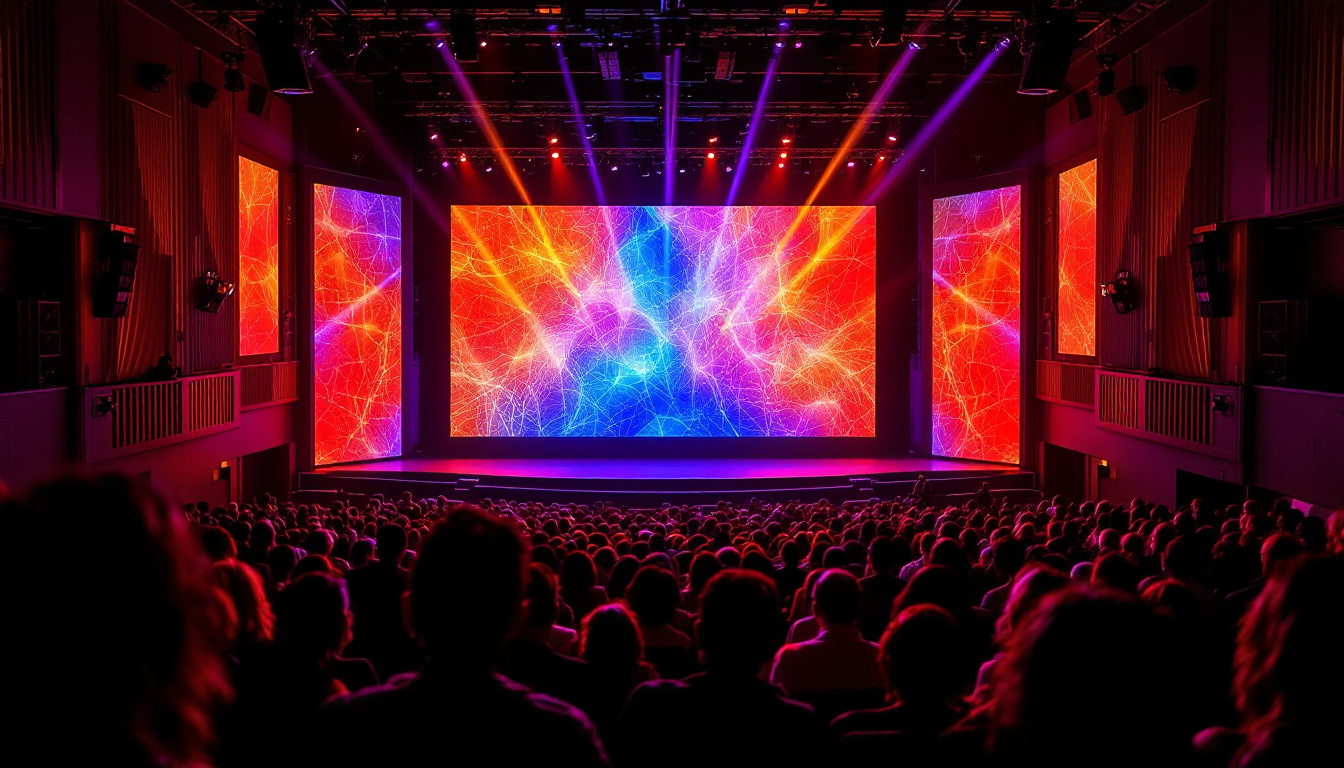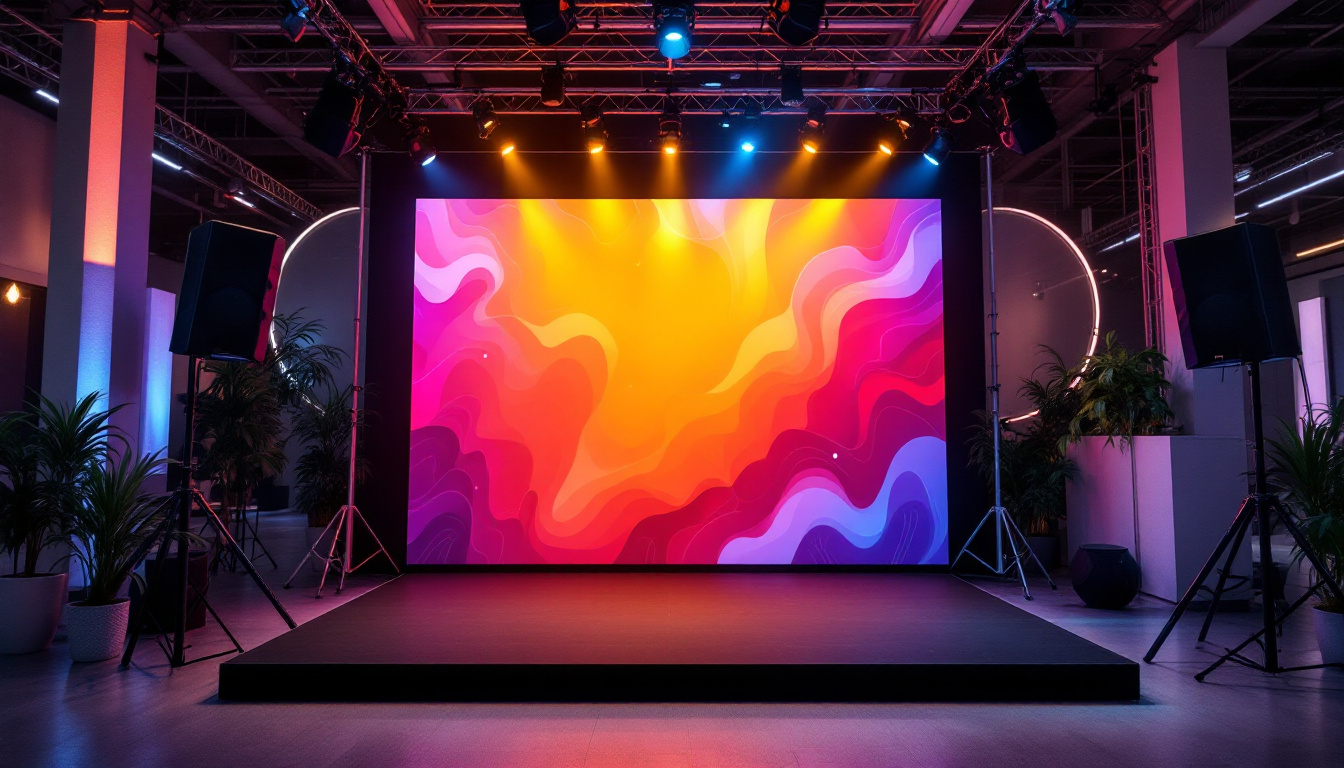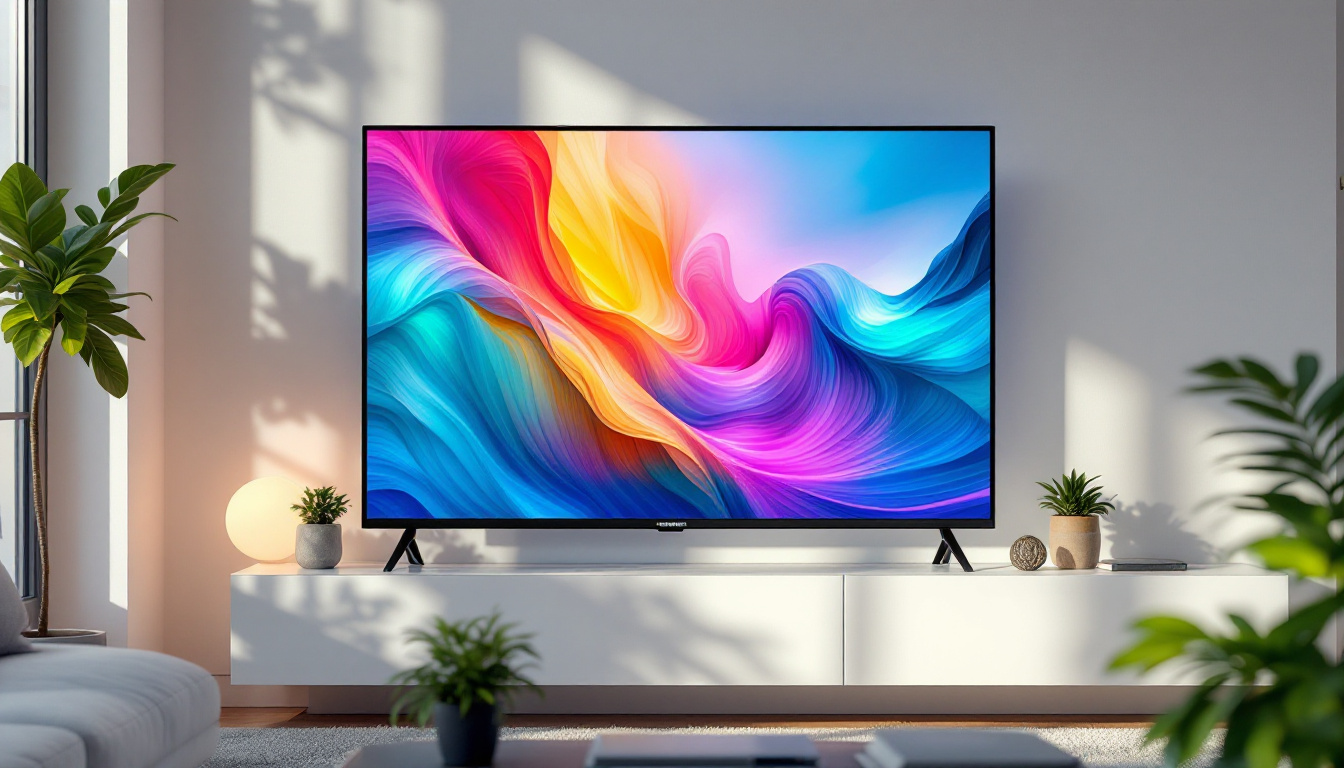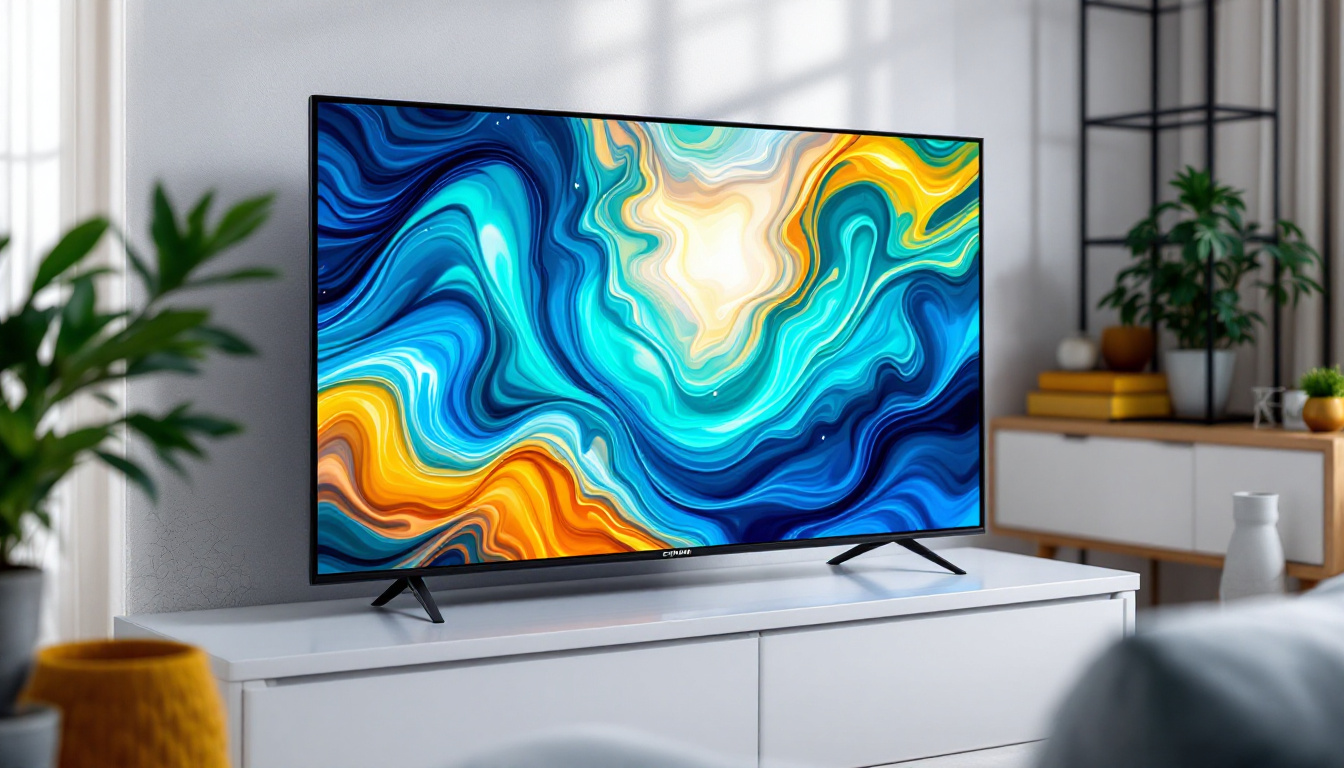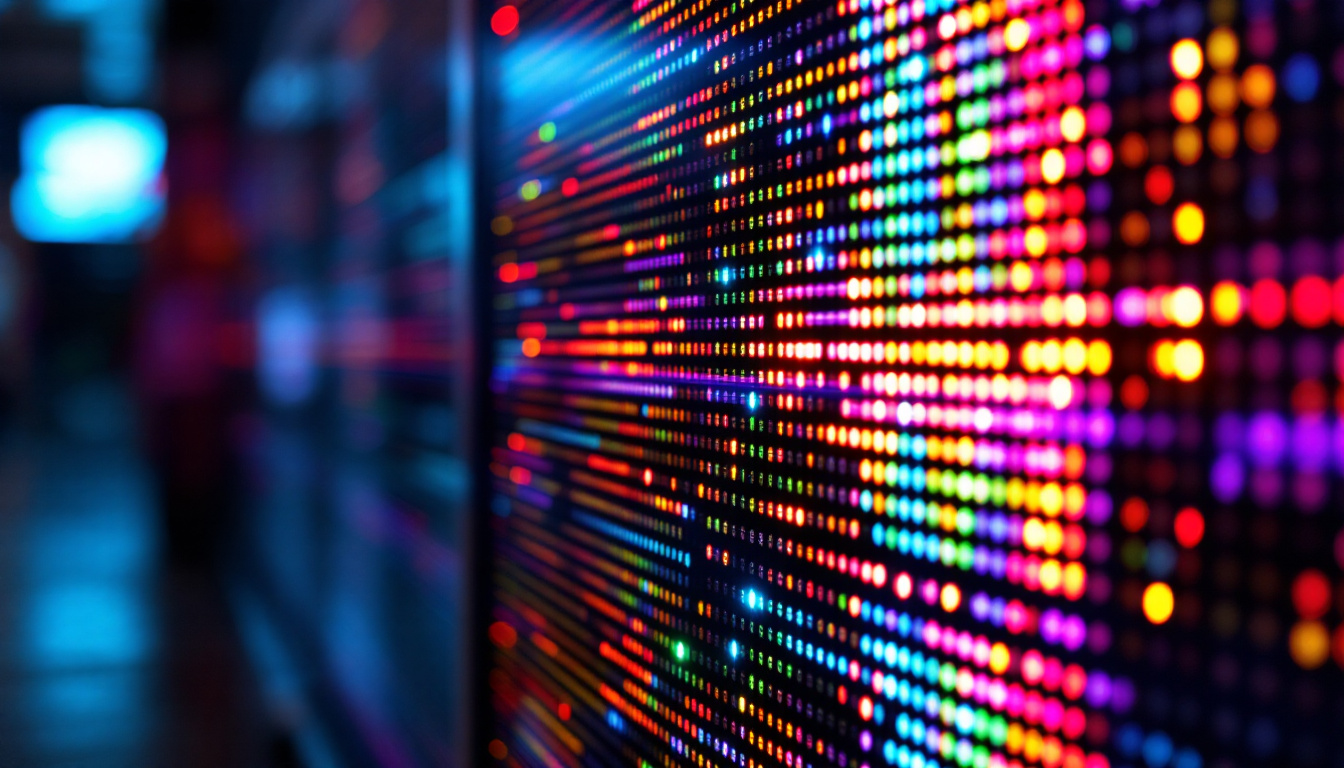In today’s digital age, the desktop monitor has become an essential component of both personal and professional computing environments. Among the various types of displays available, LED (Light Emitting Diode) monitors have gained immense popularity due to their superior performance and energy efficiency. This article delves into the intricacies of LED displays, their advantages, and what to consider when purchasing a desktop monitor.
Understanding LED Technology
LED technology is a form of LCD (Liquid Crystal Display) that utilizes LED backlighting instead of traditional fluorescent lights. This advancement has revolutionized how images are displayed on screens, offering clearer visuals and better color accuracy. The shift from fluorescent to LED backlighting has not only improved the quality of images but has also contributed to a more energy-efficient solution, making it an environmentally friendly choice for consumers and businesses alike.
How LED Displays Work
LED monitors consist of a liquid crystal display panel illuminated by LEDs. The light emitted from these diodes is more efficient and can be controlled with greater precision compared to older technologies. This results in brighter images and deeper blacks, enhancing the overall viewing experience. The technology behind LED displays allows for a wider color gamut, meaning that users can enjoy more vibrant and lifelike colors that were previously unattainable with older display technologies.
In essence, the LEDs can be arranged in two main configurations: edge-lit and full-array. Edge-lit displays have LEDs positioned around the edges of the screen, while full-array displays feature a grid of LEDs behind the entire panel. Full-array technology generally provides better contrast and uniformity in brightness. Moreover, many full-array LED displays come equipped with local dimming capabilities, which enable specific areas of the screen to dim or brighten independently, further enhancing the depth of the blacks and the overall picture quality.
The Evolution of Display Technology
The journey of display technology has been marked by significant milestones. From the bulky CRT (Cathode Ray Tube) monitors of the past to the sleek and lightweight LED displays of today, each advancement has aimed to improve user experience. LED technology emerged as a game-changer, combining the benefits of LCD with enhanced brightness and energy efficiency. This transition not only made screens thinner and lighter but also opened the door to new applications, such as ultra-thin TVs and portable devices that can deliver high-quality visuals without the weight and bulk of older technologies.
As the demand for high-quality visuals has increased, manufacturers have continuously refined LED technology, leading to innovations such as HDR (High Dynamic Range) and 4K resolution. These advancements further enhance the viewing experience, making LED monitors a top choice for gamers, designers, and everyday users alike. HDR technology allows for a greater range of brightness levels and a more dynamic contrast between light and dark areas of an image, creating a more immersive experience. Additionally, the rise of 8K resolution is on the horizon, promising even more detail and clarity, pushing the boundaries of what LED technology can achieve in the realm of visual entertainment and professional applications.
Advantages of LED Monitors
LED monitors offer a plethora of benefits that make them a preferred choice for many consumers. Understanding these advantages can help potential buyers make informed decisions when selecting a desktop monitor.
Energy Efficiency
One of the standout features of LED monitors is their energy efficiency. Compared to traditional LCD monitors, LED displays consume significantly less power. This not only translates to lower electricity bills but also contributes to a reduced carbon footprint, making them an environmentally friendly option.
Manufacturers have designed LED monitors to operate effectively without compromising on performance. The energy savings can be particularly beneficial for businesses looking to minimize operational costs while maintaining high-quality displays. Additionally, many LED monitors come with energy-saving features such as automatic brightness adjustment and sleep modes, further enhancing their efficiency. This means that users can enjoy a high-performance display while being mindful of their energy consumption, aligning with the growing trend of sustainability in technology.
Superior Image Quality
LED monitors are renowned for their superior image quality. With higher brightness levels and improved contrast ratios, these displays deliver vibrant colors and sharp details. This makes them ideal for tasks that require precision, such as graphic design, video editing, and gaming.
The ability to produce deeper blacks and brighter whites enhances the overall visual experience, making LED monitors suitable for a wide range of applications, from casual browsing to professional graphic work. Furthermore, many LED monitors support advanced technologies like HDR (High Dynamic Range), which expands the color gamut and increases the range of brightness, allowing for a more lifelike representation of images. This is particularly appealing for photographers and videographers who demand the highest fidelity in color accuracy and detail.
Thin and Lightweight Design
Another significant advantage of LED monitors is their slim and lightweight design. This not only saves desk space but also makes them easier to transport. The sleek aesthetics of LED displays can complement modern office setups and home environments, providing both functionality and style.
Moreover, the lightweight nature of these monitors allows for easy mounting on walls or adjustable stands, offering flexibility in terms of viewing angles and space utilization. Many users appreciate the ability to create multi-monitor setups with LED displays, as their thin bezels allow for a more immersive experience without the distraction of bulky frames. This adaptability is particularly beneficial for professionals who require extensive screen real estate for multitasking, such as software developers or financial analysts. Additionally, the portability of LED monitors makes them an excellent choice for remote workers or students who need to set up temporary workspaces in different locations.
Factors to Consider When Buying an LED Monitor
When searching for the ideal LED monitor, several factors should be considered to ensure that the chosen display meets specific needs and preferences. Understanding these elements can help streamline the decision-making process.
Screen Size and Resolution
The screen size and resolution are critical factors that directly impact the viewing experience. Larger screens provide more screen real estate, making multitasking easier and enhancing immersion in gaming or movie-watching scenarios. However, it is essential to balance size with available desk space.
Resolution plays a vital role in image clarity. Common resolutions include Full HD (1920×1080), Quad HD (2560×1440), and 4K (3840×2160). Higher resolutions offer more detail, which is particularly beneficial for tasks requiring precision. For general use, a Full HD resolution is often sufficient, while professionals may prefer higher resolutions for design work.
Refresh Rate and Response Time
For gamers and those who engage in fast-paced activities, the refresh rate and response time of a monitor are crucial. The refresh rate, measured in hertz (Hz), indicates how many times the screen refreshes per second. A higher refresh rate, such as 144Hz or 240Hz, results in smoother motion and reduces motion blur.
Response time, measured in milliseconds (ms), refers to how quickly a pixel can change from one color to another. Lower response times are preferable for gaming, as they minimize ghosting effects during fast movements. A response time of 5ms or lower is generally considered good for gaming monitors.
Connectivity Options
Modern monitors come equipped with various connectivity options, allowing users to connect multiple devices seamlessly. Common ports include HDMI, DisplayPort, USB-C, and VGA. Ensuring that the chosen monitor has the necessary ports for existing devices is essential for a hassle-free setup.
Additionally, some monitors offer built-in USB hubs, which can be convenient for connecting peripherals like keyboards, mice, and external storage devices. This feature can help declutter the workspace and streamline device management.
Popular Brands and Models
The market is flooded with various brands and models of LED monitors, each offering unique features and specifications. Some brands have established a reputation for quality and innovation, making them popular choices among consumers.
Top Brands in the LED Monitor Market
Brands such as Dell, ASUS, LG, and Samsung are well-known for their high-quality LED monitors. Each of these manufacturers offers a range of models catering to different needs, from budget-friendly options to high-end displays designed for professional use.
Dell’s UltraSharp series, for instance, is highly regarded for its color accuracy and ergonomic design, making it a favorite among graphic designers. On the other hand, ASUS is known for its gaming monitors that feature high refresh rates and adaptive sync technology, enhancing the gaming experience.
Recommended Models
When considering specific models, the Dell UltraSharp U2720Q offers a stunning 4K resolution and excellent color reproduction, making it ideal for creative professionals. For gamers, the ASUS ROG Swift PG259QN provides a 360Hz refresh rate and a 1ms response time, ensuring a competitive edge in fast-paced games.
For those on a budget, the Acer R240HY is a solid choice, offering Full HD resolution and an IPS panel for wide viewing angles at an affordable price. Each of these models showcases the diversity available in the LED monitor market, catering to various user needs.
Conclusion
Choosing the right desktop monitor is a critical decision that can significantly impact productivity and enjoyment. LED monitors stand out due to their energy efficiency, superior image quality, and sleek design. By understanding the technology behind LED displays, their advantages, and the factors to consider when purchasing, consumers can make informed choices that align with their specific requirements.
As technology continues to evolve, LED monitors will likely remain at the forefront of display innovation. Whether for gaming, professional work, or casual use, investing in a quality LED monitor can enhance the overall computing experience, making it a worthwhile consideration for anyone in the market for a new display.
Discover LumenMatrix’s Advanced LED Displays
Ready to elevate your visual experience with the latest in LED technology? Look no further than LumenMatrix, a pioneer in crafting cutting-edge LED displays that transform any space into a dynamic environment. Whether you’re in need of an Indoor LED Wall Display for your office, an Outdoor LED Wall Display for impactful advertising, or any of our specialized solutions like Vehicle LED Displays and Custom LED Displays, LumenMatrix has the perfect fit for your unique needs. Embrace the future of visual communication and check out LumenMatrix LED Display Solutions today to see how we can help you make a lasting impression with clarity and vibrancy.

